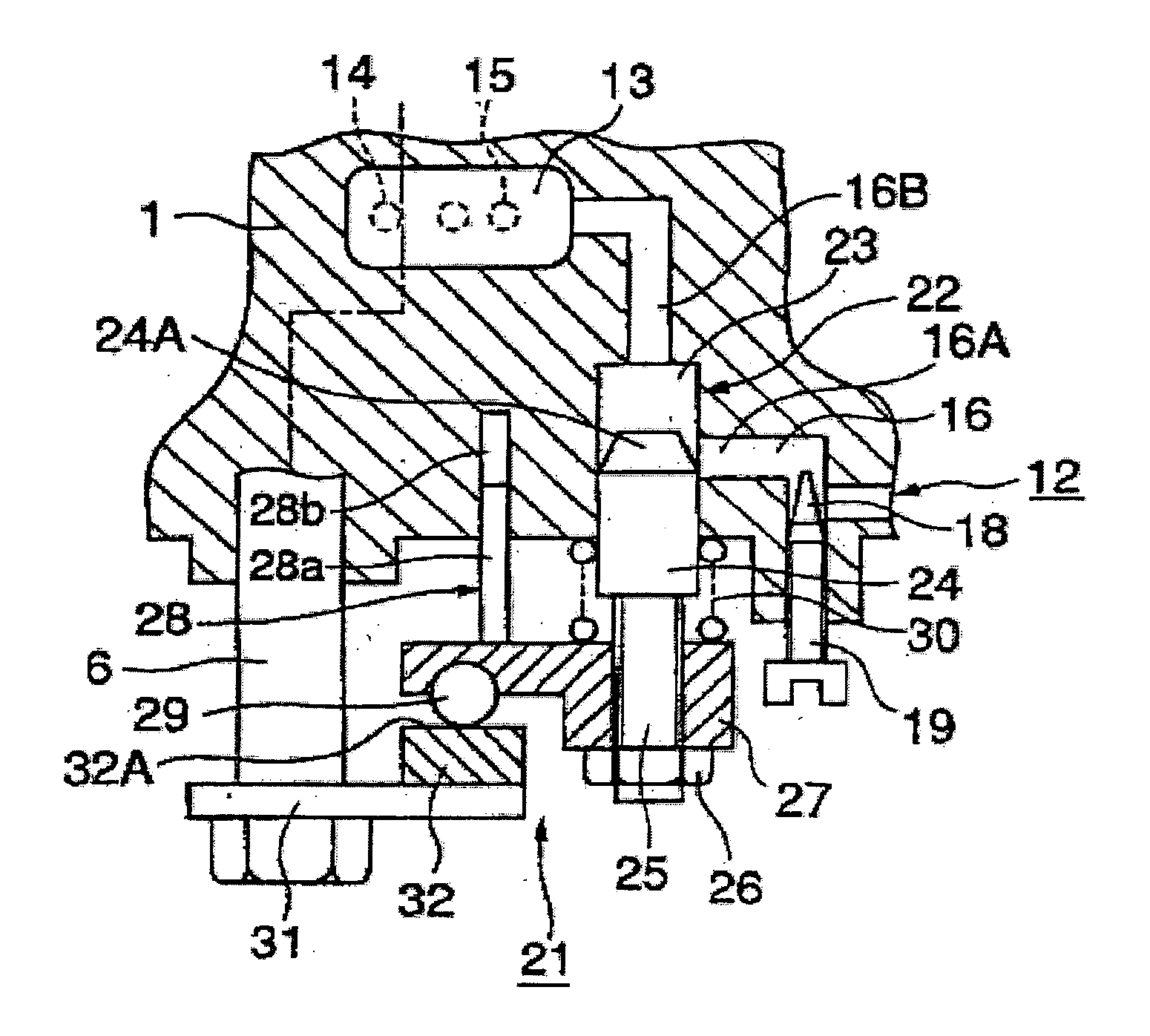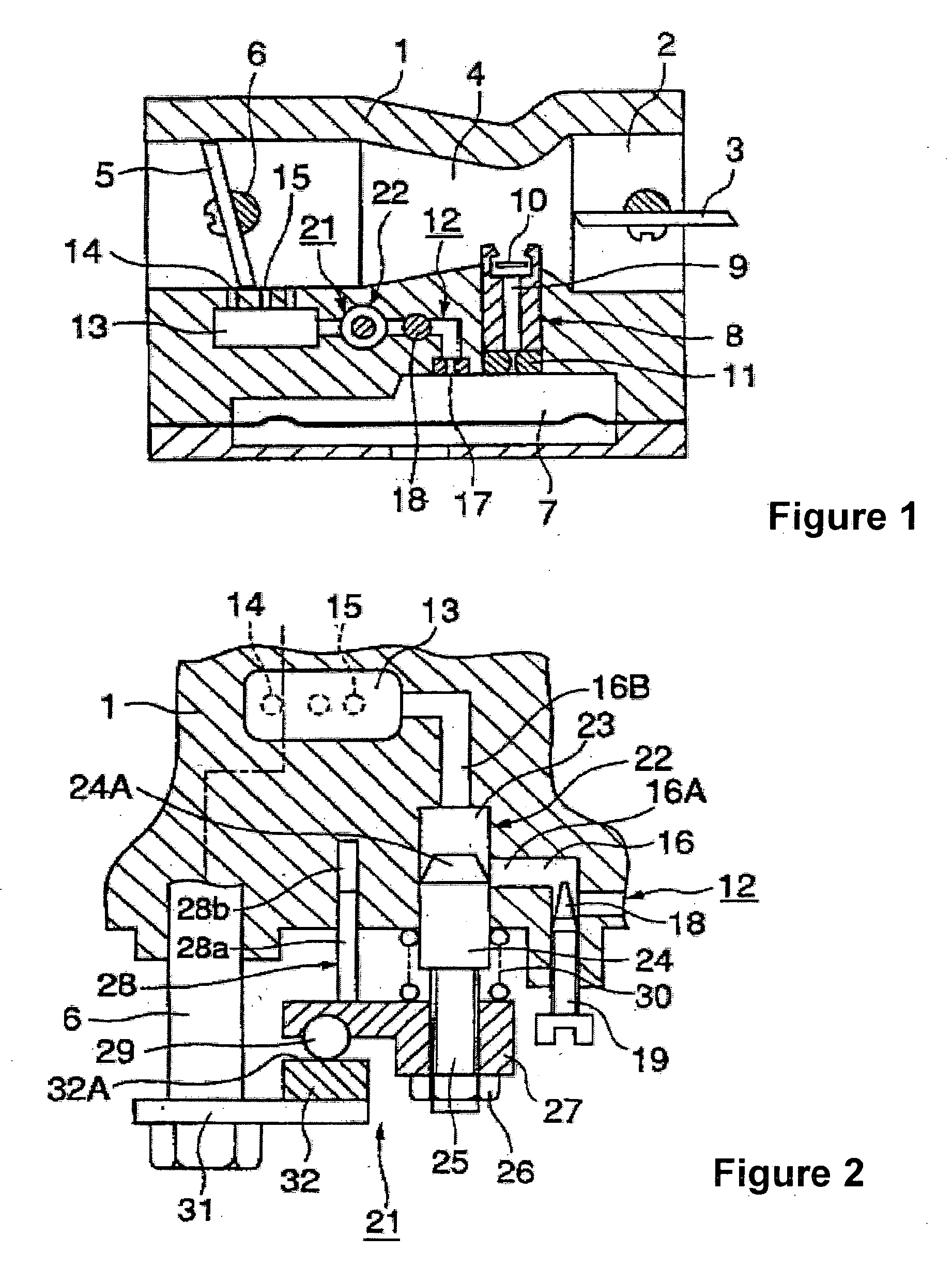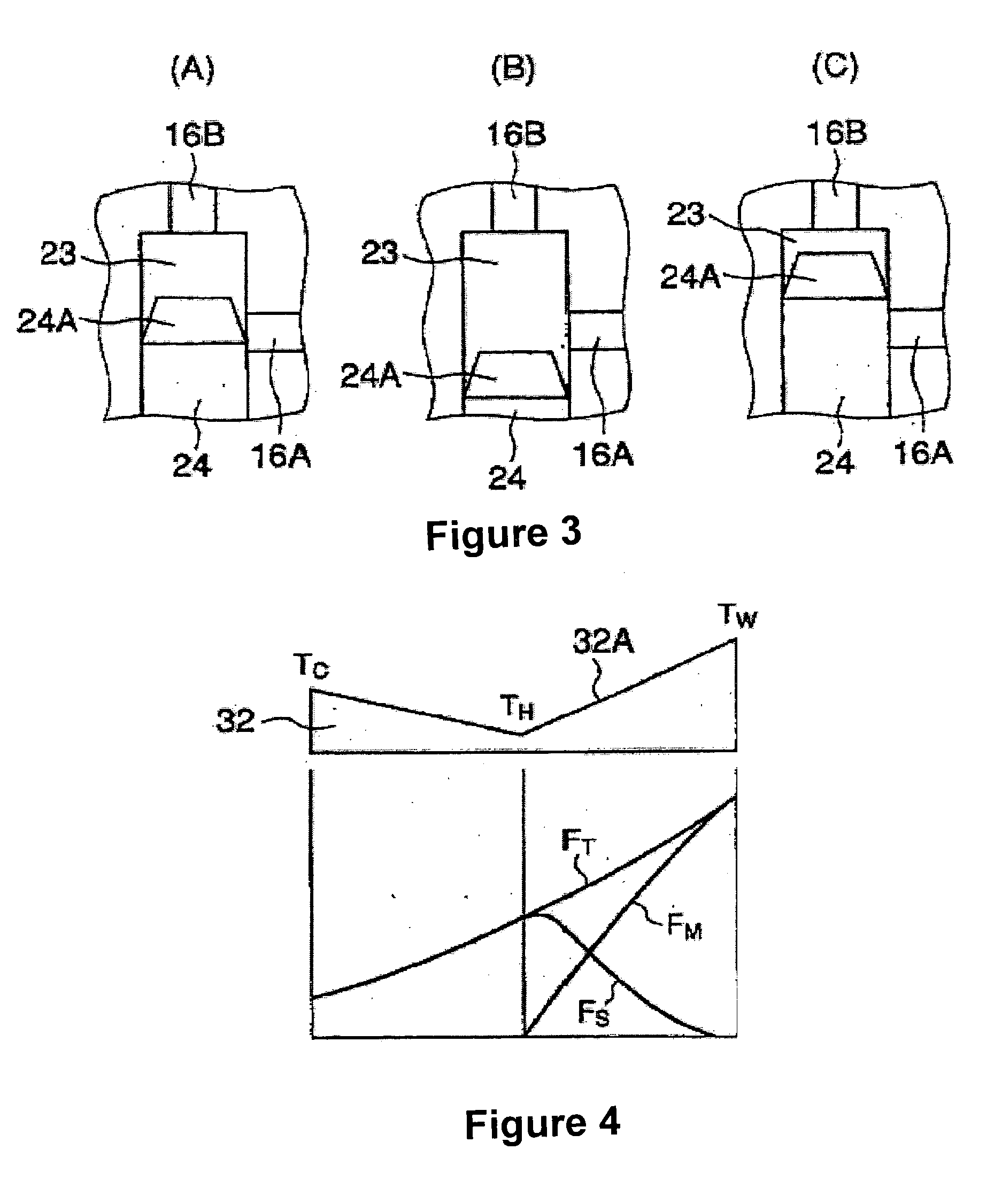Carburetor
a carburetor and carburetor technology, applied in the field of carburetor, can solve the problems of inability to carry out mid- or high-output operations smoothly, and create temporary fuel flow rate deficiency, and achieve the effects of easy compliance with exhaust gas restrictions, smooth transition, and high outpu
- Summary
- Abstract
- Description
- Claims
- Application Information
AI Technical Summary
Benefits of technology
Problems solved by technology
Method used
Image
Examples
Embodiment Construction
[0017] The embodiments of the present invention are described below with reference to the diagrams. As shown in FIGS. 1 and 2, an air intake channel 2 that is formed completely through the carburetor main body 1 and extends in the lateral direction has, in order from the inlet to the outlet, a choke valve 3, a venturi 4, and a throttle valve 5. A constant fuel chamber 7, which may be a float type or a diaphragm type and which is a diaphragm type in this embodiment, is disposed in the lower portion of the carburetor main body 1.
[0018] A main nozzle 9 doubling as the main fuel channel opens into the narrowest portion of the venturi 4. A check valve 10 that prevents the air in the air intake channel 2 from flowing into the constant fuel chamber 7 is disposed at the outlet of the main nozzle 9. A main jet 11 that restricts the maximum flow rate of the main fuel is disposed in the inlet of the main nozzle 9, facing the constant fuel chamber 7. The main nozzle 9, check valve 10, and main...
PUM
| Property | Measurement | Unit |
|---|---|---|
| Speed | aaaaa | aaaaa |
Abstract
Description
Claims
Application Information
 Login to View More
Login to View More - R&D
- Intellectual Property
- Life Sciences
- Materials
- Tech Scout
- Unparalleled Data Quality
- Higher Quality Content
- 60% Fewer Hallucinations
Browse by: Latest US Patents, China's latest patents, Technical Efficacy Thesaurus, Application Domain, Technology Topic, Popular Technical Reports.
© 2025 PatSnap. All rights reserved.Legal|Privacy policy|Modern Slavery Act Transparency Statement|Sitemap|About US| Contact US: help@patsnap.com



